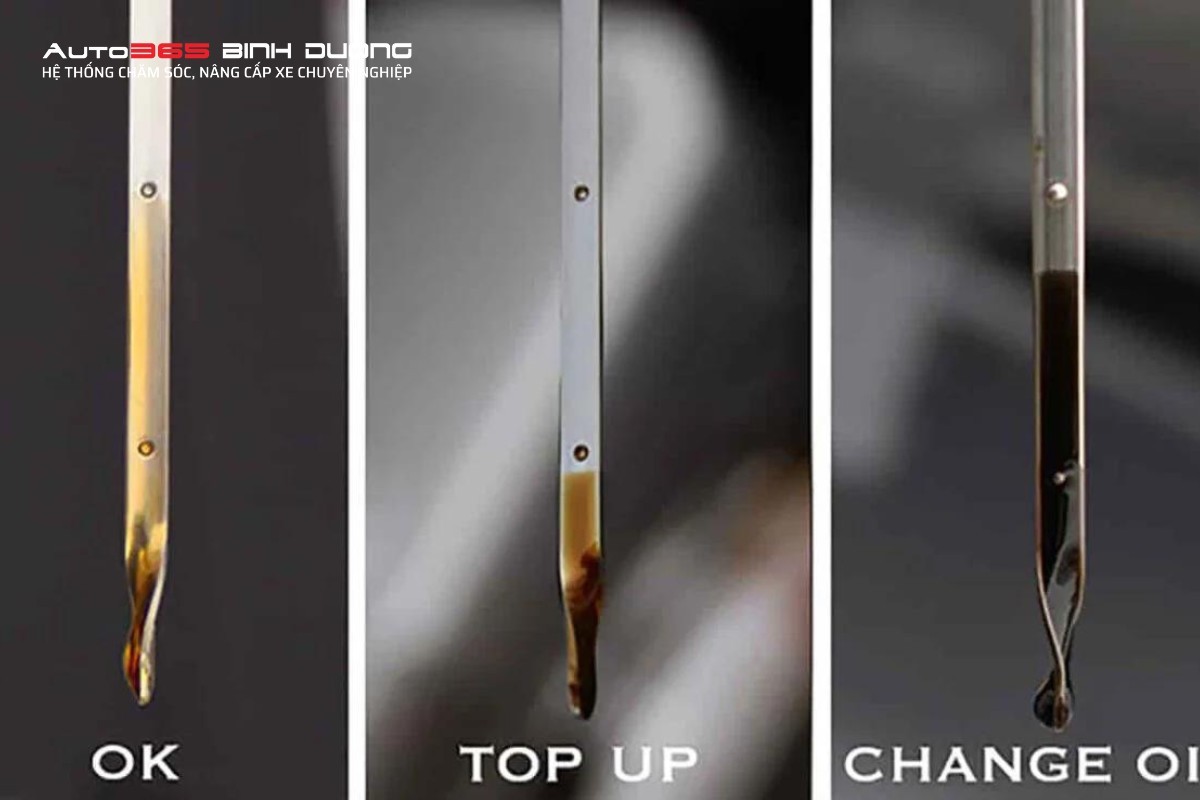Truck oil consumption is a common issue that affects engine performance and lifespan. Identifying the causes and implementing timely solutions are crucial for ensuring the stable operation of the vehicle. This article will analyze the causes of oil consumption in trucks and suggest effective solutions.
 Regularly check truck oil levels
Regularly check truck oil levels
Signs of Oil Consumption in Trucks
Early detection of signs of oil consumption helps vehicle owners address the issue promptly, preventing serious engine damage. Some typical signs include:
- Oil stains: Inspect the undercarriage of the truck. If you see oil stains, it’s likely that the truck is leaking oil.
- Abnormal exhaust smoke: Exhaust smoke that is blue-gray or black is a sign that oil is being burned in the combustion chamber.
- Rapid oil level decrease: Check the oil level with the dipstick frequently. If the oil level drops rapidly after a short distance, the truck may be consuming oil.
- Burning smell: A burning smell in the engine compartment may be due to oil leaking and coming into contact with hot parts.
Causes of Oil Consumption in Trucks
Many factors can contribute to oil consumption in trucks. Here are some common causes:
Oil Leaks
Oil leaks are the most direct and easily identifiable cause. Oil can leak from places such as:
- Worn or damaged gaskets and seals: Gaskets and seals seal the gaps between engine parts. When they are worn or damaged, oil will leak out.
- Loose or damaged oil filter: The oil filter is responsible for filtering impurities in the oil. If the oil filter is loose or damaged, oil will leak.
- Cracked or broken oil pan: The oil pan is where the engine oil is stored. If the pan is cracked or broken, oil will leak out.
 Worn gaskets and seals cause oil leaks
Worn gaskets and seals cause oil leaks
Oil Burning in the Combustion Chamber
- Worn piston rings and pistons: Piston rings and pistons are responsible for sealing the combustion chamber. When they are worn, oil will enter the combustion chamber and be burned with the fuel.
- Worn valve stem seals: Valve stem seals prevent oil from entering the combustion chamber through the valves. When the seals are worn, oil will enter the combustion chamber.
- Using unsuitable oil: Using oil with a viscosity that is not suitable for the engine will increase the likelihood of oil being burned.
Other Causes
- Frequent overloading: Overloading causes the engine to work harder, increasing pressure and temperature in the engine, causing the oil to evaporate faster.
- Driving at high speeds for extended periods: High speeds increase friction and temperature in the engine, leading to oil consumption.
- Improper maintenance: Improper maintenance, such as not changing the oil regularly, will reduce oil quality and increase the likelihood of oil consumption.
How to Fix Oil Consumption in Trucks
Depending on the cause of oil consumption, there will be different remedies:
- Inspect and replace leaking parts: Carefully inspect gaskets, seals, oil filters, and oil pans and replace if necessary.
- Repair or replace piston rings and pistons: If the piston rings and pistons are worn, they need to be repaired or replaced to ensure a tight combustion chamber.
- Replace valve stem seals: If the valve stem seals are worn, they need to be replaced to prevent oil from entering the combustion chamber.
- Use the correct oil: Choose an oil with a viscosity that matches the manufacturer’s recommendations.
- Perform regular maintenance: Perform regular truck maintenance and change the oil on time to ensure the engine is running at its best.
- Avoid overloading: Adhere to the vehicle’s permissible load to avoid overloading the engine.
- Drive at reasonable speeds: Avoid driving at high speeds for extended periods.
Conclusion
Oil consumption in trucks is an issue that needs to be addressed promptly. Identifying the cause and applying appropriate corrective measures will help prolong engine life and ensure stable vehicle operation. If you cannot handle it yourself, take the vehicle to a reputable garage for inspection and repair by professional technicians.

